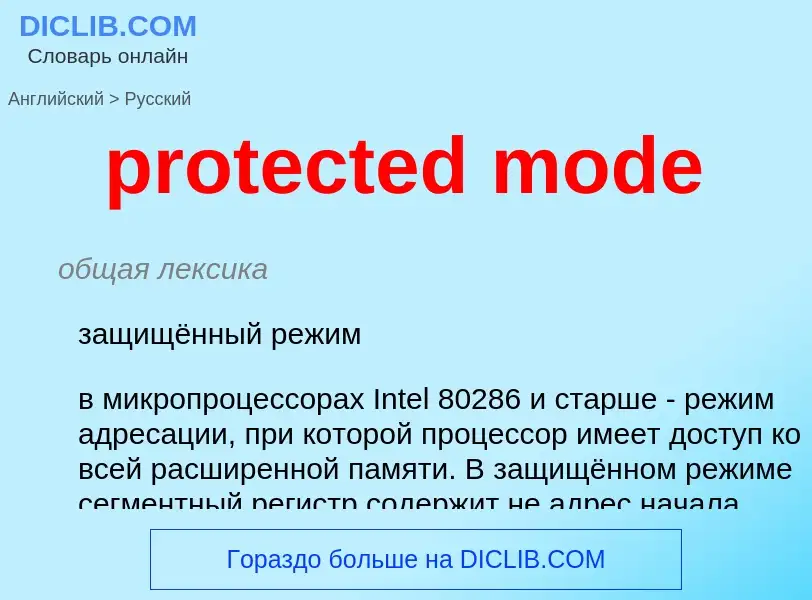ترجمة وتحليل الكلمات عن طريق الذكاء الاصطناعي ChatGPT
في هذه الصفحة يمكنك الحصول على تحليل مفصل لكلمة أو عبارة باستخدام أفضل تقنيات الذكاء الاصطناعي المتوفرة اليوم:
- كيف يتم استخدام الكلمة في اللغة
- تردد الكلمة
- ما إذا كانت الكلمة تستخدم في كثير من الأحيان في اللغة المنطوقة أو المكتوبة
- خيارات الترجمة إلى الروسية أو الإسبانية، على التوالي
- أمثلة على استخدام الكلمة (عدة عبارات مع الترجمة)
- أصل الكلمة
protected mode - ترجمة إلى إنجليزي
общая лексика
защищённый режим
в микропроцессорах Intel 80286 и старше - режим адресации, при которой процессор имеет доступ ко всей расширенной памяти. В защищённом режиме сегментный регистр содержит не адрес начала сегмента, а индекс в таблице описателей сегментов. Кроме адреса начала сегмента каждая запись в этой таблице содержит флаги защиты памяти, позволяющие запретить в неё запись и чтение. Отсюда возникло и название режима
антоним
Смотрите также
تعريف
ويكيبيديا
In computing, protected mode, also called protected virtual address mode, is an operational mode of x86-compatible central processing units (CPUs). It allows system software to use features such as virtual memory, paging and safe multi-tasking designed to increase an operating system's control over application software.
When a processor that supports x86 protected mode is powered on, it begins executing instructions in real mode, in order to maintain backward compatibility with earlier x86 processors. Protected mode may only be entered after the system software sets up one descriptor table and enables the Protection Enable (PE) bit in the control register 0 (CR0).
Protected mode was first added to the x86 architecture in 1982, with the release of Intel's 80286 (286) processor, and later extended with the release of the 80386 (386) in 1985. Due to the enhancements added by protected mode, it has become widely adopted and has become the foundation for all subsequent enhancements to the x86 architecture, although many of those enhancements, such as added instructions and new registers, also brought benefits to the real mode.

.png?width=200)
